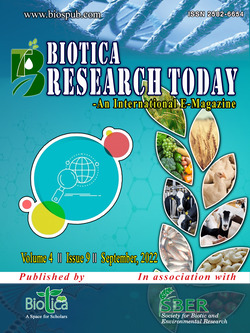
Real-Time PCR: A Sensitive, Specific and Rapid Diagnostics Assay of Fish and Shellfish Pathogens
Pratapa M.G.
ICAR-Central Institute of Fisheries Education (CIFE), Mumbai, Maharashtra (400 061), India
David Waikhom*
ICAR-Central Institute of Fisheries Education (CIFE), Mumbai, Maharashtra (400 061), India
Laishram Soniya Devi
College of Fisheries, Central Agricultural University (Imphal), Lembucherra, Tripura (799 210), India
DOI: NIL
Keywords: Diagnostics, Pathogens, Real-time PCR, SYBR green
Abstract
The real-time PCR (polymerase chain reaction) assay is one of the most commonly used techniques in disease diagnostics. This advanced form of PCR has both pros and cons. Real-time PCR has advantages over conventional PCR in terms of specificity, rapidity, and sensitivity to identify a pathogen at the genomic level. It has many forms of chemistry, such as SYBR green-based, probe-based, etc., based on its working principle. Many researchers have reported that real-time PCR could accurately detect and identify various fish pathogens. However, it has some drawbacks, such as the high cost and required a skilled person to operate this assay.
Downloads
not found
Reference
Arya, M., Shergill, I.S., Williamson, M., Gommersall, L., Arya, N., Patel, H.R., 2005. Basic principles of real-time quantitative PCR. Expert Review of Molecular Diagnostics 5(2), 209-219.
Du, Y., Liu, Y., Xiao, P., Meng, L., Liu, P., 2017. Development and application of a quantitative real-time polymerase chain reaction assay for the detection of Aeromonas salmonicida. Journal of the World Aquaculture Society 48(4), 574-582.
Durand, S.V., Lightner, D.V., 2002. Quantitative real time PCR for the measurement of white spot syndrome virus in shrimp. Journal of Fish Diseases 25(7), 381-389.
Sahoo, P.K., Parida, S., Mohapatra, A., Mohanty, J., 2019. Selection of candidate reference genes for RT-qPCR analysis in Argulus siamensis and their validation through screening of drugs and drug targets. Scientific Reports 9(1), 1-11.
Valasek, M.A., Repa, J.J., 2005. The power of real-time PCR. Advances in Physiology Education 29(3), 151-159.
